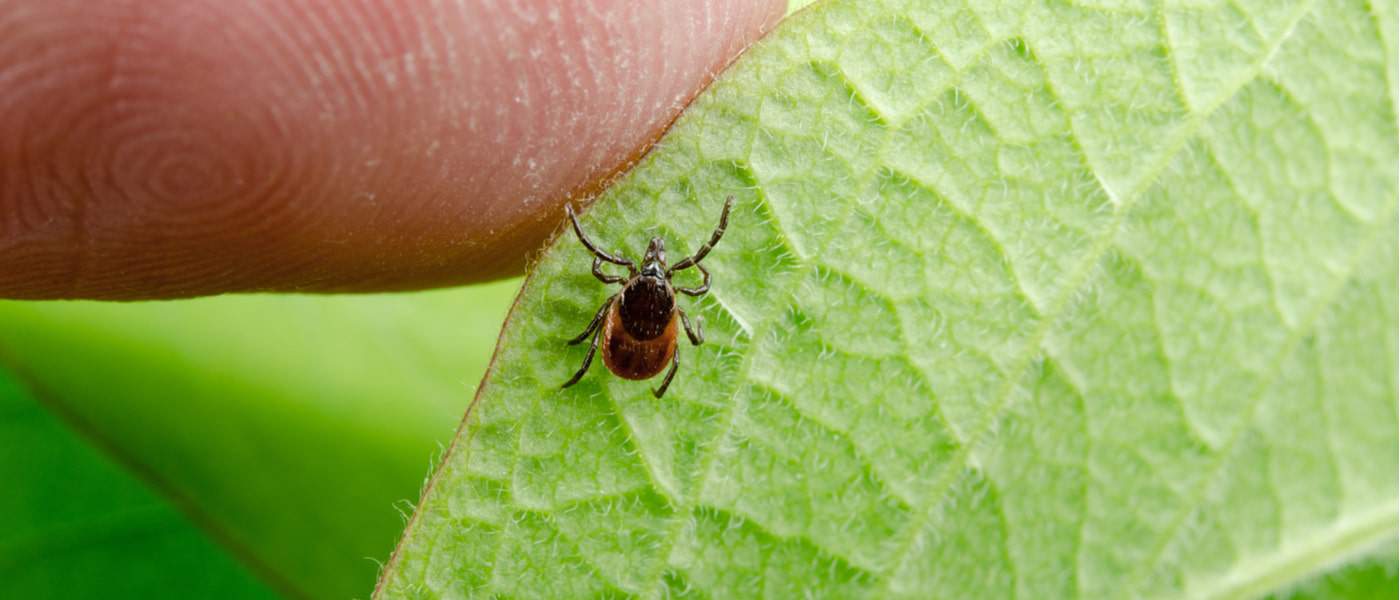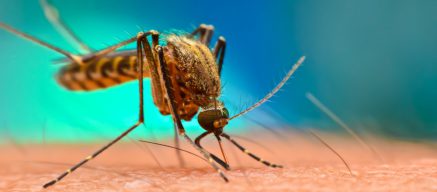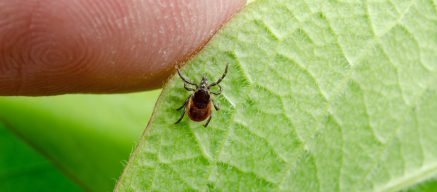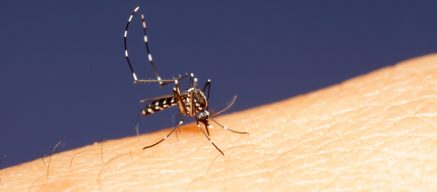
Travelling far and wide appeals greatly to a huge variety of people, regardless of race, religion, age, or gender. As humans, we are naturally inquisitive and many thrive off adventure and new challenges. Therefore, many of us are attracted to visiting undeveloped places, for our own experiences or to improve the lives of those who inhabit these places, by undertaking volunteer work and development projects.
There’s no doubt that travelling can be exciting and life changing. But travelling often comes with certain dangers. None more so than some of the deadly diseases that can be caught whilst on the road. Some of these diseases can be present in developed, first world nations, so it is vital to do plenty of research before you travel.
Here we look at 6 of the most deadly diseases to avoid of whilst travelling the world:
Malaria
What is it?
Malaria is a serious tropical disease that is contracted via the bite of an infected mosquito. If Malaria isn’t diagnosed early and treated correctly it can prove fatal. It is possible to contract Malaria from one single mosquito bite, so ensuring you protect yourself from being bitten is the best way to remain Malaria free.
Symptoms
- High temperature
- Headaches
- Sweats and chills
- Vomiting
- Diarrhoea
- Muscle pains
Long term effects
Malaria affects the red blood cells in the body making them rupture and cause the above symptoms. As the disease progresses, the infected person’s spleen and liver enlarge. In the long term Malaria can cause anaemia or jaundice and potentially death, especially if left untreated.
Where can you catch Malaria?
Malaria can be found in more than 100 countries worldwide. Typically, it is most common is tropical areas as these environments lend to a higher population of mosquito’s.
Some notable areas where malaria if rife include:
- Central and South America.
- Parts of the Middle East.
- Many countries in Africa and Asia.
- Haiti and Dominican Republic.
- Some Pacific Islands.
Preventing Malaria
Visit a travel health clinic prior to your trip to see if Malaria is likely to be a risk for you. A travel health specialist nurse will be able to advise you as to whether anti-malarial medication is recommended and if so, which options might be most suitable for you based on your medical history.
Additionally, bite prevention is also a must when visiting countries that pose a Malaria risk. Applying a DEET based insect repellent, covering your arms and legs with long and loose clothing and using an insecticide-treated mosquito net are great ways to avoid being bitten.
Typhoid
What is it?
Typhoid Fever is a bacterial infection that can cause damage to many vital organs throughout the body. Typhoid can be contagious and an infected person can pass the bacteria out of their body through their faeces or urine. This can in turn contaminate food or water leading to transmission between people.
Symptoms
- A high temperature that can reach 39-40C (103-104F).
- Stomach pain.
- Headache.
- Constipation or diarrhoea.
Long term effects
Typhoid Disease can cause septicaemia (infected blood) and inflammation of the heart muscles, which can lead to long term heart problems. Additionally, if left untreated, Typhoid can cause intestinal perforation and internal bleeding. This can sometimes prove fatal.
Where can you catch Typhoid?
The areas with the highest rates of typhoid fever are:
- Africa
- South and South-East Asia.
- The Indian subcontinent.
- South America.
- The Middle East.
- Parts of Europe.
- Central America.
Preventing Typhoid
Vaccination is the best method of prevention. Vaccination is recommended for anybody who is visiting an area where the disease is widespread. If you’re planning on travelling to an area where you cannot guarantee that your food and water is fully sterilised then vaccination is essential. If you are uncertain of the safety of the tap water, stick to bottled water and ensure that all food you eat is thoroughly cooked before consumption.
Hepatitis A
What is it?
Hepatitis A is a disease that causes inflammation of the liver and in some cases can lead to liver failure. The disease can be transmitted through contaminated water or uncooked foods, so avoidance can be difficult.
Symptoms
Although Hepatitis A symptoms rarely appear until the virus has been active in your body for a few weeks, these are the symptoms to look out for:
- Fatigue.
- Nausea and vomiting.
- Abdominal pain or discomfort (typically around the liver area).
- Loss of appetite.
- Fever.
Long term effects
Hepatitis A isn’t commonly associated with long-term damage to the body. Despite this, symptoms have been known to last up to 6-9 months and in some situations sufferers may experience liver failure.
Where can you catch Hepatitis A?
Hepatitis A can be found all over the world, however, it is more common in undeveloped countries.
Preventing Hepatitis A
Vaccination is the most effective method of preventing Hepatitis A. Try and ensure you get your vaccination at least 2 weeks before travel to ensure it is fully effective. People planning to travel to parts of the world where Hepatitis A is widespread, particularly if levels of sanitation and food hygiene are expected to be poor should consider the vaccination.
Yellow Fever
What is it?
Yellow Fever is a serious infection that like Malaria is spread by the bite of an infected mosquito. Yellow Fever can often present as a short lived illness, however in around 15% of people the fever can cause serious and potentially fatal damage.
Symptoms
Symptoms include:
- Fever.
- Chills.
- Eyes being sensitive to light.
- Loss of appetite.
- Headaches.
- Muscle pains (particularly in the back).
Long term effects
Yellow Fever can reduce liver function which causes jaundice, a yellowing of the skin and eyes. This gives the disease its name, ‘Yellow Fever.’ This intense liver damage that lead to internal and external bleeding causing shock, coma and potentially, death.
Where can you catch Yellow Fever?
Yellow fever is found in:
- Sub-Saharan Africa.
- Most of South America.
- Certain parts of the Caribbean.
- Parts of Central America.
Preventing Yellow Fever
The Yellow Fever vaccination is highly effective and vaccination is strongly recommended if you’re travelling to a country where Yellow Fever is found. In fact, some countries require you to have a certificate proving you’ve been vaccinated against Yellow Fever in order to gain entry.
Check out the list of countries here.
Giardiasis
What is it?
Giardiasis is an infection that effects the digestive system and is caused by tiny parasites called Giardia Intestinalis.
Symptoms
The most common symptom of Giardiasis is diarrhoea, however there are many other symptoms including:
- Abdominal cramps.
- Nausea.
- Bloating.
- Indigestion.
- Fatigue.
- Dehydration.
- Loss of appetite.
- Weight loss.
Long term effects
Although most people recover well if treated properly, Giardiasis infection can cause long term gastrointestinal complications in some people.
Where can you catch Giardiasis?
Giardiasis is a widespread global disease and is present in the following countries:
- Sub-Saharan Africa.
- South and South East Asia, particularly India and Nepal.
- Central America.
- South America.
- Russia.
- Turkey.
- Romania.
- Bulgaria.
- The Balkans (Croatia, Serbia, Montenegro, Slovenia, Macedonia, and Bosnia and Herzegovina).
Preventing Giardiasis
Regular hand washing, good personal hygiene, avoiding untreated water and being careful when dealing with animals are some of the key things to remember when avoiding contracting Giardiasis.
Lyme Disease
What is it?
Lyme disease is a bacterial disease that is released into the body following the bite of an infected tick.
Symptoms
The early symptoms of Lyme Disease are:
- Flu-like symptoms.
- Rash at the site of the bite (often resembling a bullseye).
- Headache.
- Neck stiffness.
- High temperature.
- Fatigue.
Long term effects
If left untreated Lyme disease can cause serious damage to the body including loss of movement in one or both sides of the face, joint pains, headaches and heart palpitations.
Over months or years suffers of Lyme Disease can experience repeated episodes of joint pain and swelling. Some people also develop shooting pains in their arms and legs.
Where can you catch Lyme disease?
Lyme disease hits a lot closer to home than the other diseases mentioned. Infected ticks are often found in the forest regions of the UK, Europe and Asia.
- North-Eastern, North-Central, and Pacific coastal regions of North America.
- Forest areas of the UK.
- Europe.
- Asia.
Preventing Lyme disease
The best way to prevent Lyme disease is to avoid wooded, bushy areas with long grass as this is where infected ticks tend to be. If avoiding these areas isn’t possible then using a range of effective bite prevention methods is a must.
Cover up any exposed skin with clothing especially around the ankles, using DEET based insect repellents and checking your skin regularly for any sign of ticks should help keep you safe. If you do find a tick on your skin, you need to remove it immediately using tweezers ensuring the entire body is removed.
Avoiding the worst diseases whilst travelling can be tough! Our key piece of advice is to prepare; vaccinate before you begin your travels and educate yourself about the worst travel diseases in the countries that you’re visiting.
Contact us now to book your consultation with one of our specialist travel health nurses. They will be able to advise of the dangers you may encounter and the best preventative methods you can take to ensure your trip is safe, stress-free and happy.











